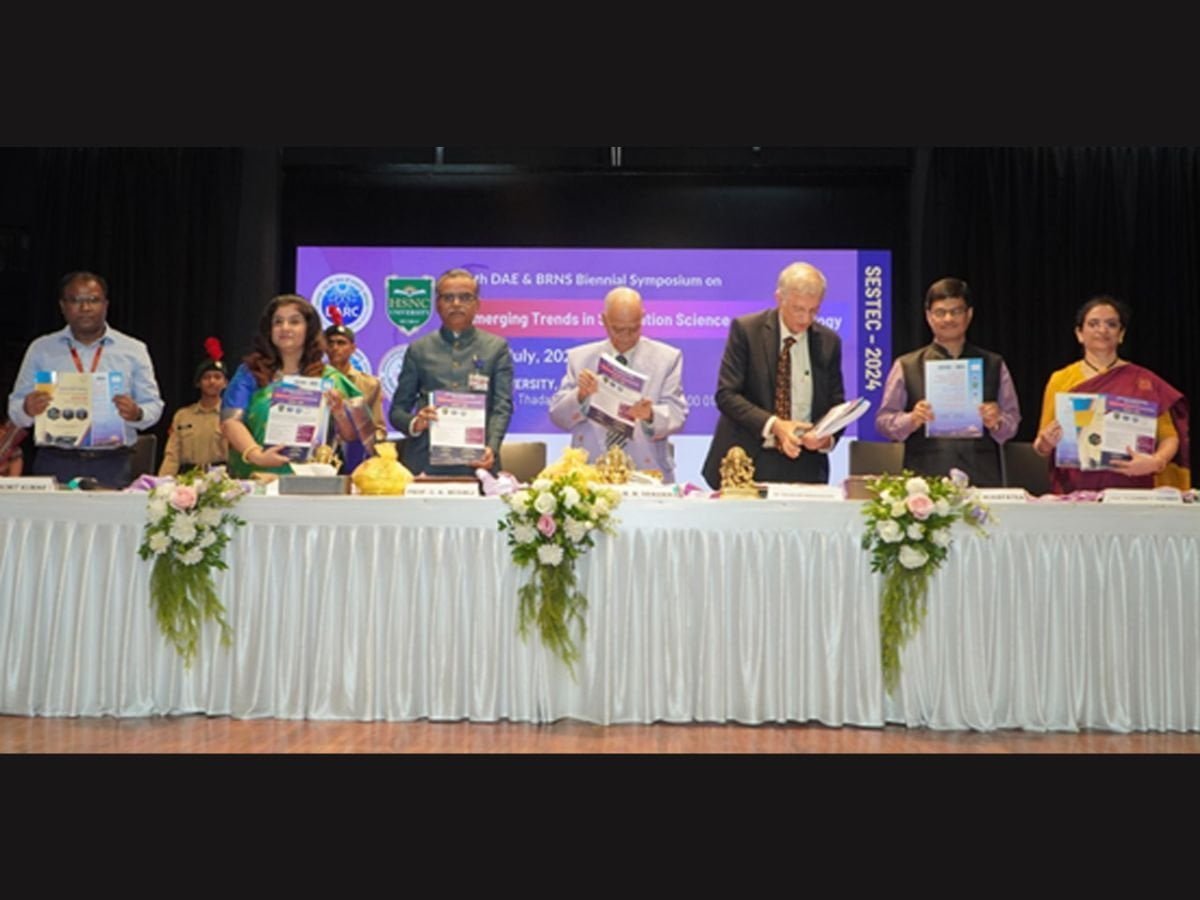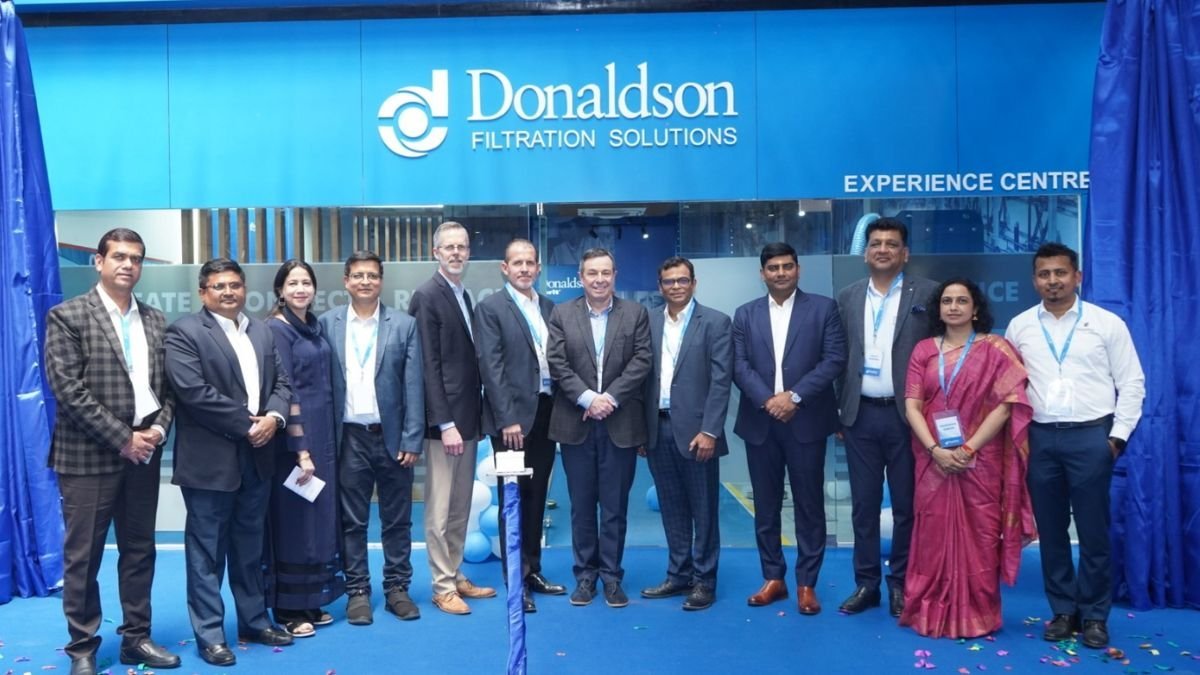Mumbai (Maharashtra) [India] July 17 : The prestigious four-day 11th DAE-BRNS Biennial Symposium on “Emerging Trends in Separation Science and Technology” (SESTEC-2024) commenced at the Worli campus of HSNC University, Mumbai on 10th July 2024 in the presence of Prof. M.M. Sharma, Padma Vibhushan, Padma Bhushan, and Former Director of the Institute of Chemical Technology; eminent industrialist Dr. Niranjan Hiranandani, Provost, HSNC University, Mumbai; Dr. Hemlata K. Bagla, Vice Chancellor, HSNC University, Mumbai and Co-chairperson SESTEC 2024; Dr. PK Mohapatra, Director, RC&I Group, BARC and Chairperson, SESTEC 2024; Prof. UK Mudali, Vice Chancellor, HBNI, Mumbai; Dr. Sumit Kumar, Convenor, SESTEC-2024; Prof. Tejashri Shanbhag, Principal, KC College of Arts, Commerce and Science, Co-convenor SESTEC-2024. A special bulletin on separation science advances was unveiled at the inaugural ceremony.
In her Opening Remarks, Dr. Bagla warmly welcomed the gathering of scientists and researchers drawn from across the world. She touched on the emerging future trends in separation science and stressed on the pressing need to focus on exploring on applications for water, energy, food and climate. Referring to the blatant pollution of polythene and micro-plastics in oceans, Dr. Bagla asked a thought-provoking question to the audience, “Is this the legacy we want to leave for our future generations?”
Elaborating on this, she continued, “Energy, Economics and Environment are very closely intertwined but only Economics is in the limelight currently since the focus is on commerce. All three E’s need to be balanced for sustainability”. She acknowledged that the challenges for scientists are never-ending but expressed that “As scientists, we should aim for sustainable processes by focusing on minimising our energy footprint and not ignore the three R’s of reuse, recycle and reduce”.
The inaugural ceremony was graced by Prof. M.M. Sharma as the Chief Guest. In his inaugural address, Prof. Sharma highlighted the significance of separation science and technology by explaining its numerous applications across various sectors such as pharmaceutical, petrochemical, environmental, nutrition and food, waste water treatment, nuclear & radio chemistry, industrial chemistry, polymer chemistry, agricultural chemistry, cancer treatment, clean up of oil spills, hazardous waste treatment, air filtration, capture of greenhouse gases and consumer goods sectors. He drove home this point saying, “Another indication of the importance of separation processes comes from the fact that they are classically considered to represent almost 80% of the CAPEX (equipment) and OPEX (energy requirement) of production costs in Chemical Process Industry (CPI) plants but receive only 20% attention.”
At the outset, he complimented HSNC University, Mumbai for its state-of-the-art infrastructure, the marvellous auditorium and impressive campus. He encouraged the young participants to brainstorm innovative ideas which could gradually lead to monetisation opportunities while also benefiting the environment.

In his Presidential address, Dr. Hiranandani congratulated the participants of the premier symposium. He averred that separation science holds the key to sustainable development and it will play a very large role in a developing country like India – to remove poverty, inequality and improve the standard of living, provide safe drinking water etc. With almost half of humanity suffering insufficient access to potable water and water scarcity for agriculture now considered to be a crisis especially for India, water desalination by reverse osmosis (RO), electro-dialysis (ED), water purification by nano-filtration (NF), and ultra-filtration (UF) has emerged as a feasible solution. The goal is to have “zero discharge”. He beamed as he shared that this technology of treating waste water and recycling it, was first put to use by his company in the form of a waste water treatment plant at Powai, over 25 years back. With improved technology, upgradation is being done. He said the treated water is used in construction, in the development of hospitals and in flushing etc.
“Sustainability is something we imbibe in HSNC University, Mumbai. We aim to educate & teach students while collaborating & connecting with researchers, scientists, industry. Our whole purpose is to take sustainable infrastructure and climate change seriously and tackle them by collaborating with other institutes, Universities, organisations etc.”Dr. Hiranandani said.
During his introductory address, Dr. Mohapatra got nostalgic and recollected that coincidentally, over 20 years back, Prof. M.M. Sharma was the Chief Guest for the first biennial symposium (SESTEC 2004). Dr. Mohapatra said that one of the driving forces behind the significant advancements in environmental separation science is the need for creative solutions to the evolving environmental challenges. He remarked that water treatment and purification, environmental remediation, the capture of toxic and greenhouse gases and the recovery of precious components from wastes are some of the most characteristic examples that “fuel” the evolution of separation science and technology in environmental applications.
In his speech, Prof. Mudali shared valuable insights into the latest breakthroughs, emphasising the cutting-edge research and development in separation science and technology taking place in the broader scientist community.
Dive into Separation Science & Technology
The symposium is hosting a total of 306 participants. Out of the 276 abstracts received, the program will feature 177 poster presentations, 7 plenary sessions, 22 invited talks, 10 short lectures (SL) and 58 oral presentations. The scientific program includes several invited talks by eminent scientists from India and abroad, which encompass both basic studies and applications addressing the topics of novel challenges in separation science and technology.
SESTEC-2024 is being organised by HSNC University, Mumbai in association with Bhabha Atomic Research Centre, Mumbai and the Association of Separation Scientists and Technologists (ASSET). This symposium is sponsored by the Board of Research in Nuclear Sciences (BRNS), Department of Atomic Energy (DAE).
About HSNC University, Mumbai :
HSNC University, Mumbai is a State Public University recognised by the University Grants Commission (UGC) with the Hon’ble Governor of Maharashtra Shri Ramesh Bais as its Chancellor, eminent industrialist Dr. Niranjan Hiranandani as its Provost and Dr. Hemlata K. Bagla as its Vice Chancellor. HSNC University, Mumbai comprises renowned Mumbai colleges such as H.R. College of Commerce and Economics as its lead college and K.C College of Arts, Science and Commerce and Bombay Teachers’ Training College College as its constituent colleges. HSNC University, Mumbai was established as a joint venture between the Ministry of HRD, the Government of Maharashtra and the HSNC Board and is head-quartered in its multi-storey building at Worli in Mumbai. This multi-faculty University aims to set new paradigms in education by harnessing the energy and enthusiasm of the young, dynamic population of India and guiding it towards the path of learning, knowledge, research, innovation, service to society and entrepreneurship.
If you have any objection to this press release content, kindly contact pr.error.rectification@gmail.com to notify us. We will respond and rectify the situation in the next 24 hours.




